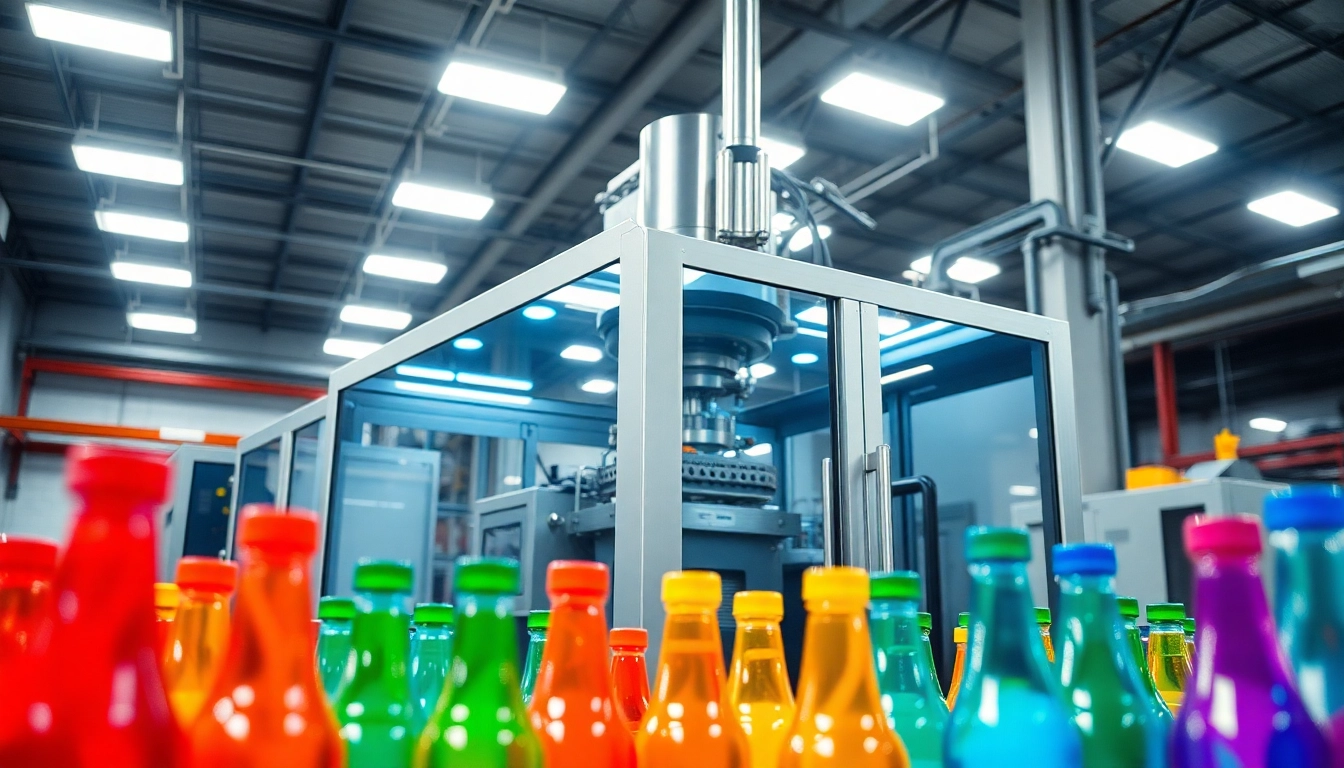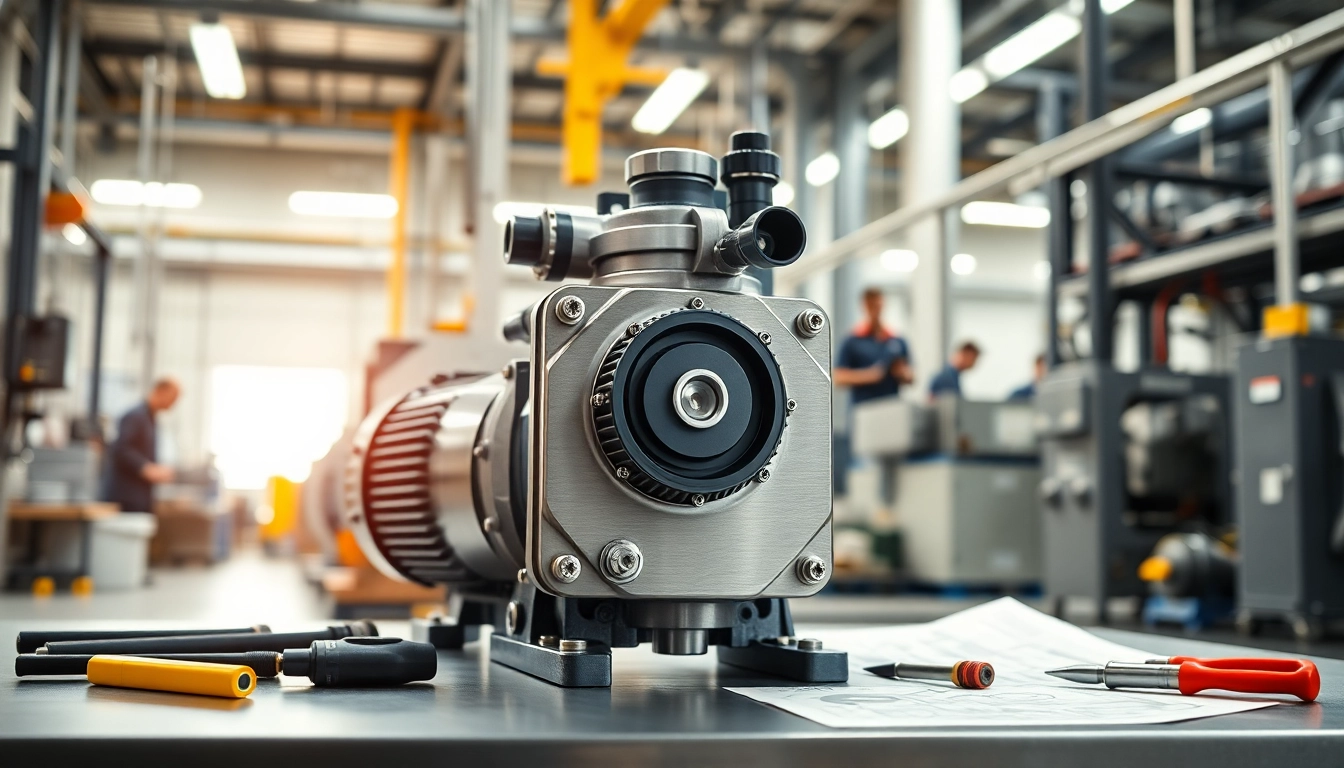Understanding Blow Molding Technology
What is Blow Molding?
Blow molding is a manufacturing process used to create hollow plastic parts by inflating a heated plastic tube (known as a parison) inside a mold. The process involves the standard steps of heating, shaping, and cooling, which result in lightweight and durable products suitable for various applications.
This technique is particularly beneficial for producing containers, bottles, and other hollow plastic shapes with consistent quality and efficiency. Companies seeking to optimize production often partner with a reliable Blow Molding Machine Supplier to procure high-quality machinery.
Types of Blow Molding Processes
There are several types of blow molding processes, each serving unique manufacturing needs. The most prevalent types include:
- Extrusion Blow Molding (EBM): This process involves extruding a melted plastic tube and then inflating it into a mold. EBM is ideal for producing large containers and bottles.
- Injection Blow Molding (IBM): Here, molten plastic is injected into a mold to form a preform, which is then blow-molded into the final shape. This method is commonly used for small and intricate designs.
- Stretch Blow Molding (SBM): This technique combines stretch and blow molding to enhance the clarity and strength of the final product. It’s widely used for producing PET bottles for beverages.
Applications of Blow Molding
The versatility of blow molding enables its application across various industries, including:
- Packaging: Used predominantly for manufacturing bottles for beverages, personal care products, and household cleaners.
- Automotive: Produces light-weight parts such as fuel tanks and ducts to minimize vehicle weight and improve fuel efficiency.
- Toys: Many plastic toys utilize blow molding for economical mass production while ensuring safety and quality.
- Consumer Goods: Produces containers and closures for different consumer products, enhancing brand visibility with customized designs.
Choosing the Right Blow Molding Machine
Factors to Consider When Selecting a Supplier
Selecting the right blow molding machine supplier is crucial for ensuring high-quality production. Here are essential factors to consider:
- Experience and Reputation: Look for suppliers with a proven track record in the industry. Companies like Uniloy and Parker globally offer extensive experience and a reliable reputation.
- After-Sales Support: Assess the level of after-sales service, including installation, maintenance, and training. A dependable supplier should provide comprehensive technical support.
- Customization Options: Examine whether the supplier offers customized machines tailored to specific production requirements, enhancing operational efficiency.
Machine Configurations and Specifications
The type of blow molding machine you choose depends on your production needs. Key configurations include:
- Single-station EBM: Efficient for small-scale production; typically has lower initial costs.
- Multi-station EBM: Enables higher output and is suitable for mass production, optimizing efficiency.
- Rotary machines: Ideal for high-speed production, allowing continuous operation and higher volume output.
Cost vs. Quality: Making the Right Investment
When investing in blow molding machinery, businesses should weigh costs against quality. Although cheaper machines may seem appealing, they often lack durability and efficiency, leading to higher long-term operational costs. Opt for high-quality machines from reputable suppliers, balancing initial investment and experience with productivity and output quality.
Benefits of Partnering with a Reputable Supplier
Quality Assurance in Manufacturing
Engaging with a reputable blow molding machine supplier ensures that the machines meet stringent quality standards. Suppliers may adhere to ISO certifications and other quality assurance protocols that guarantee the integrity of the manufacturing process.
Technical Support and Maintenance
Technical support is pivotal after purchasing blow molding machines. A supportive supplier can provide timely maintenance services, minimizing downtime and enhancing productivity. Understanding the service agreement and support options available is crucial for sustained output.
Innovative Solutions and Customization Options
Leading suppliers often invest in research and development, introducing innovative technologies that present competitive advantages. Customization options may include features tailored to specific production needs, optimizing manufacturing capabilities and reducing waste.
Market Leaders in Blow Molding
Key Competitors and Their Offerings
Competition within the blow molding industry includes numerous reputable manufacturers:
- Uniloy: A pioneer in blow molding technologies that offers diverse processes, including EBM and IBM, serving various sectors from packaging to automotive.
- Parker: With over 30 years of experience and thousands of production lines globally, Parker’s systems are renowned for reliability and innovation.
- Jomar Corporation: Specializes in injection blow molding machines, offering tailored solutions for intricate designs and enhanced efficiency.
Emerging Trends in Blow Molding Technology
As manufacturing technologies evolve, several trends are emerging within the blow molding industry:
- Sustainability: The push towards eco-friendly production processes and materials is increasingly prominent, with many companies developing biodegradable or recyclable plastics.
- Automation: The rise of Industry 4.0 has led to the incorporation of smart technologies for improved monitoring, control, and optimization of blow molding processes.
- Increased Customization: Companies are seeking more customizable solutions to cater to changing market demands and reduce time to market.
Success Stories: Companies Excelling in Blow Molding
Numerous companies excel through effective utilization of blow molding technology:
- Coca-Cola: Leveraging stretch blow molding to produce lightweight, efficient bottles that conserve material and transportation costs.
- Procter & Gamble: Utilizing advanced blow molding techniques for shampoo and personal care product packaging, maintaining consistent quality while enhancing brand visibility.
- PepsiCo: Innovative use of blow molding for beverage containers, reducing environmental impact while increasing production capabilities.
Getting Started with Blow Molding Production
Initial Steps for Business Owners
For businesses looking to venture into blow molding production, the journey begins with thorough planning and understanding market demands. Here are initial steps to consider:
- Market Research: Analyze market needs, competitors, and potential gaps in the market. Understanding customer preferences will guide production strategy.
- Investment Planning: Identify startup costs, including machinery, raw materials, and operational expenses. Develop a detailed financial plan to ensure sustainable growth.
- Supplier Acquisition: Build relationships with reliable suppliers for machinery, materials, and other necessary components to ensure smoother operations.
Best Practices for Efficient Operations
Efficient operations are key to maximizing profitability in blow molding production:
- Maintenance Scheduling: Implement a routine maintenance schedule for machinery to prevent breakdowns and extend equipment lifespan.
- Quality Control: Regularly monitor the production process and implement quality assurance measures to ensure product standards.
- Staff Training: Invest in ongoing training programs for employees to enhance operational efficiency and safety awareness.
Measuring Success and Performance Indicators
To gauge the success of a blow molding operation, businesses should establish clear performance indicators:
- Production Efficiency: Analyze output rates and operational downtime to identify areas for improvement.
- Quality Metrics: Monitor defect rates and customer satisfaction to ensure products meet market standards.
- Cost Analysis: Regularly evaluate manufacturing costs to identify cost-saving opportunities and optimize pricing strategies.















Leave a Reply